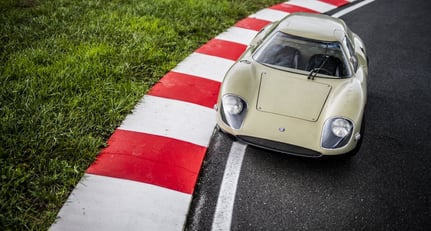When is the car industry ever going to learn that sheer speed is not the answer to everything? Of course, cars have been getting quicker ever since they were invented, but we’ve now reached a point where it’s simply impossible to approach the performance fringes of a 2,000bhp electric hypercar, a 700bhp super estate or even a 400bhp ‘hot’ hatchback on the public road.
In a future where EV technology is evolving at a rapid rate and the days of the internal combustion engine have been categorically numbered by certain governments, we’d like to see the focus change from on-paper statistics and Nürburgring lap times towards smaller, lighter and more ingeniously packaged sports cars that sacrifice outright power for easily accessible driving pleasure and, shock horror, greater efficiency.
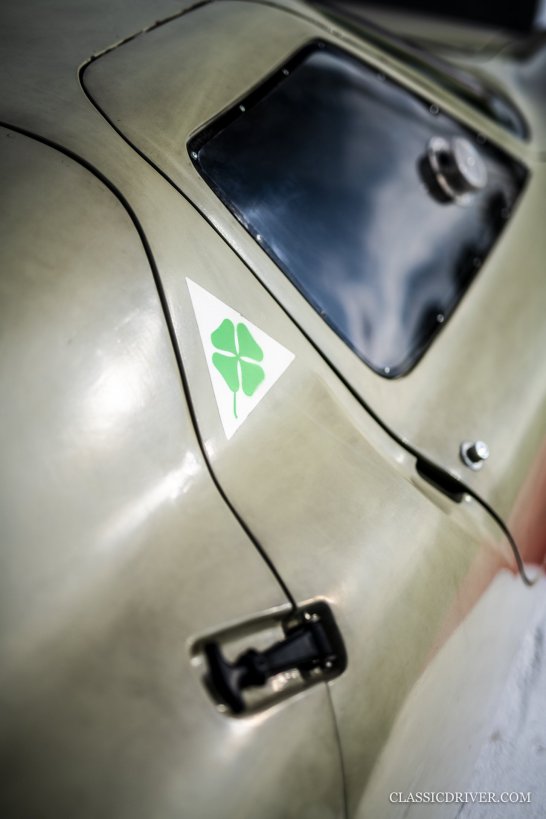

What we’d really like to see is a modern-day version of the Alfa Romeo Scarabeo, this tiny featherlight prototype from the 1960s, which features a humble yet cleverly positioned four-cylinder engine providing ample power to set the heart racing of any hot-footed driving enthusiast.
When Alfa Romeo decided to forgo its own talented engineers and entrust the completion of the Tipo 33 prototype to Carlo Chiti’s Autodelta outfit, there were understandably some disgruntled faces in Milan. Giuseppe Busso, who’d started the Tipo 33 project before having the rug drawn from beneath his feet, promptly proposed a cheaper and lighter prototype that employed the same format but utilised the four-cylinder from the Giulia Sprint GTA.

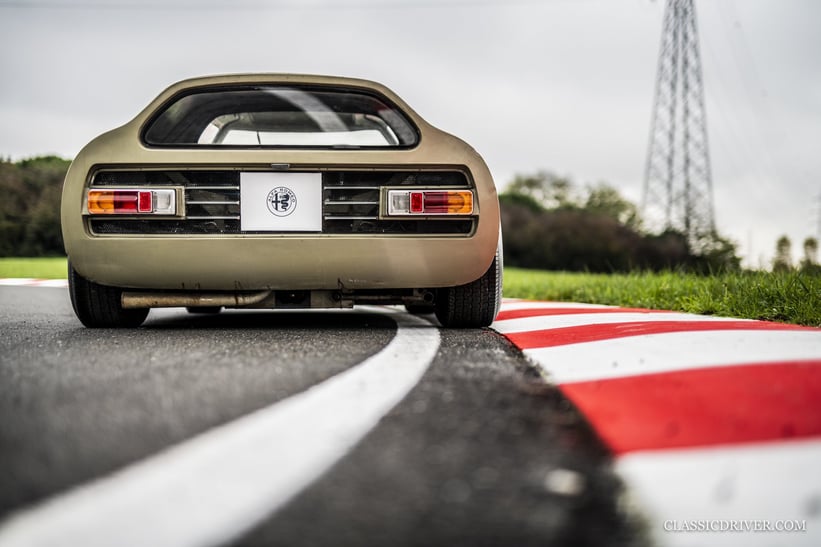

Together with fellow engineer Orazio Puliga, Busso decided to explore a concept that was put forward by Alfa’s former chief test driver and occasional Works racer Consalvo Sanesi in the early 1950s. Sanesi suggested that the further back in the car a driver could sit, the more control he or she would be able to exercise over it.
The first result of Project Scarabeo was presented at the Paris Motor Show in 1966. Clothed in a dramatic body designed by Sergio Sartorelli of O.S.I. in Turin (a short-lived subsidiary of Ghia, which counted Tom Tjaarda and Giovanni Michelotti among its alumni), the baby prototype looked unlike any other car at the show. Its ground-hugging, snowplough-like snout was contrasted with an abrupt Kamm tail just aft of the rear wheels, which made it look as though the designers had simply lopped the rear section clean off. More impressive was the space-age wraparound windscreen, which doubled as the vertical-opening door and was entirely devoid of pillars, thus maximising visibility.


Beneath the peculiar surface, the Scarabeo was an exercise is masterful packaging. An H-shaped tubular chassis, just like that conceived for the Tipo 33, integrated fuel tanks either side to evenly distribute the weight, while the inline four-cylinder engine from the GTA was mounted transversely at the rear and cleverly encompassed the gearbox and the clutch. A prop shaft unusually mounted at 45 degrees to provide drive to the differential. Furthermore, the Renault R8-derived suspension meant each wheel was individually sprung and the rear disc brakes were mounted inboard.
Despite the positive reaction from show-goers and the automotive press, Busso and Puliga didn’t rest on their laurels. Realising that such a radical design was not viable for production, even on a small scale, they went back to the drawing board and, together with O.S.I., created a simplified version of the first Scarabeo concept.
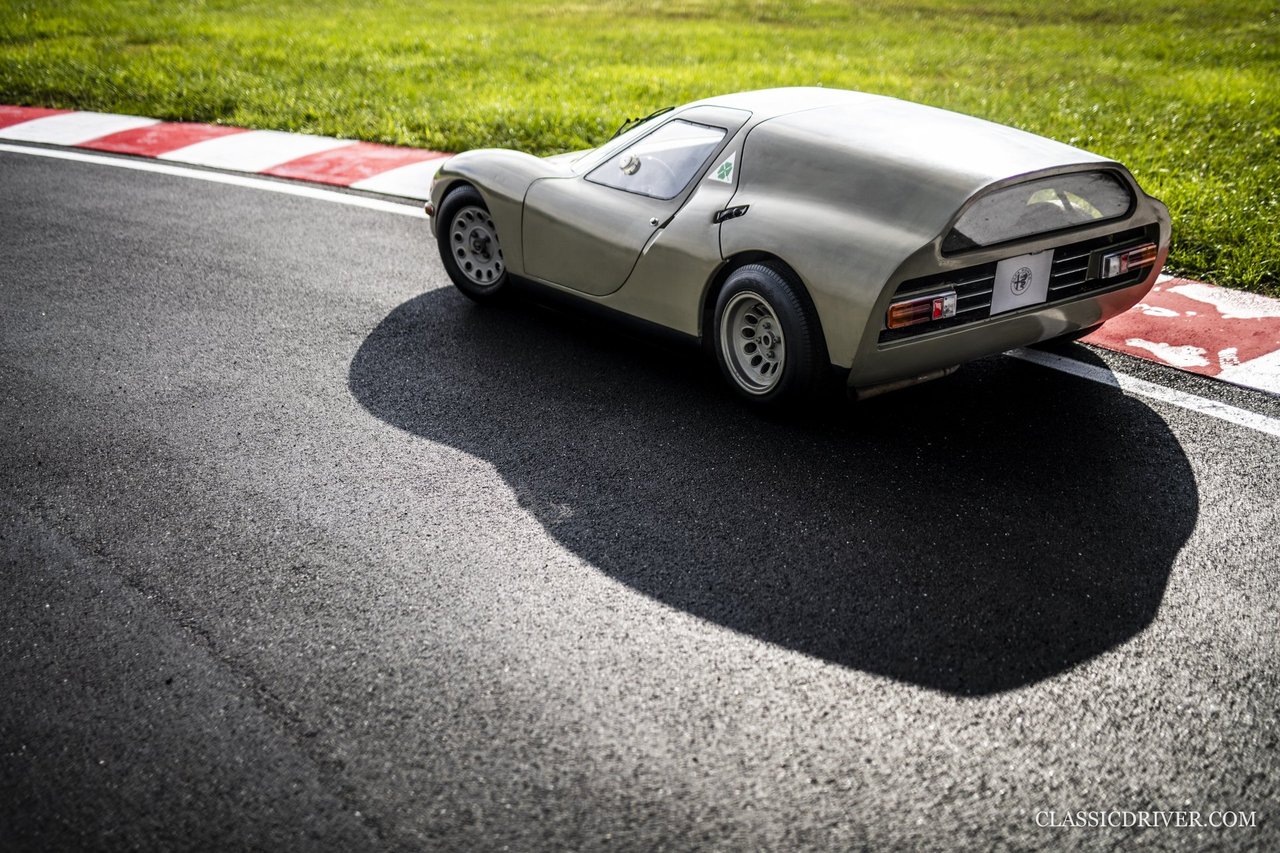


That’s the car you’re ogling, probably slack-jawed, right now. A softer and more aesthetically satisfying design, the baby ‘breadvan’ boasts shades of Porsche 904 and Fiat Abarth OT 2000 Periscopio in its nose, more than a whiff of Alfa TZ2 around its midriff and a bit of Bill Thomas’s Cheetah at the rear. It’s crudely assembled in a way a 1960s prototype should be… and all the more charming for it.
The best thing about the Scarabeo was that it tipped the scales at just 700kg. Its weight, combined with the innovative layout, go-kart-like wheelbase and pokey four-pot motor, must have made the car an absolute blast to drive. Sadly, we’ll never know what it would be like to exploit all its power and dynamic prowess on a twisting Italian country road or short circuit as the car does not run. If you look in the especially cosy cockpit, you’ll notice the gear lever between the seats is not actually connected to anything. Perhaps we should start a petition to persuade the Museo Storico Alfa Romeo to resurrect the beast.

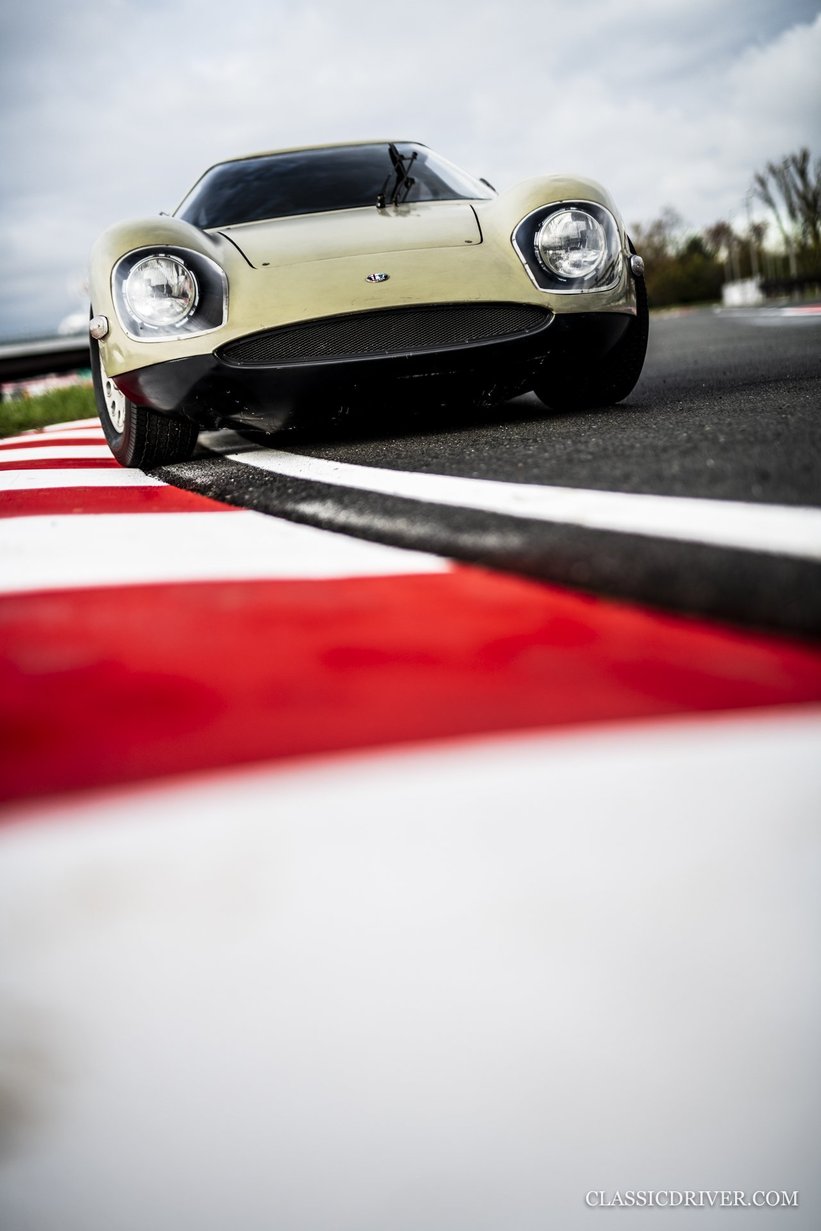
We’re not naïve and appreciate such a car today would never be granted the homologation to be sold and used on the road. But there are aspects of the Scarabeo and its overall philosophy on which we think modern sports car makers could place more emphasis. Like we’ve seen with mobile phone technology, batteries and electric motors are only going to get lighter, smaller and more efficient. So why can’t we be a little less greedy with the numbers and see more lightweight sports cars, be them combustion-engined, hybridised or fully electric, that we could enjoy the hell out of on the road?
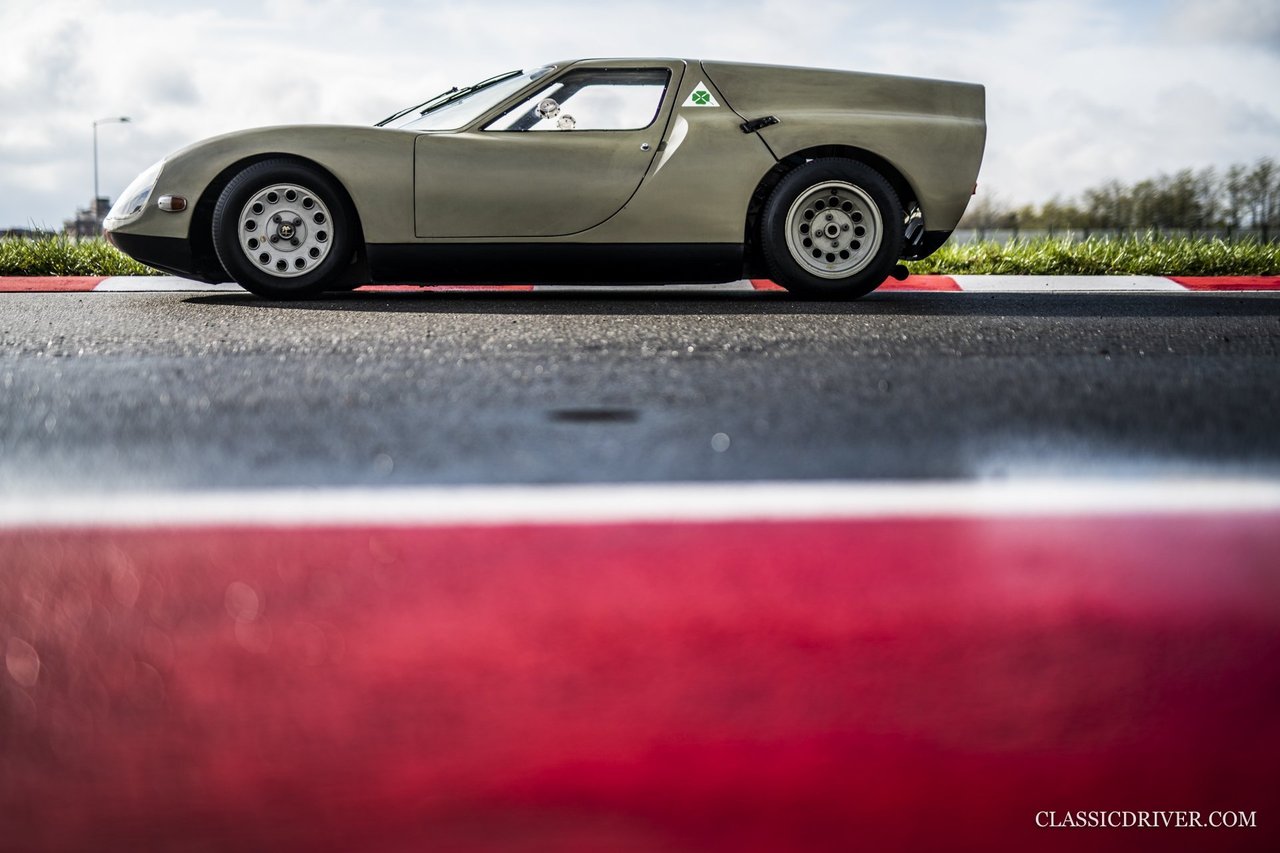
It’s food for thought. For the time being, however, we’ll daydream about tearing across our favourite Alpine pass, all arms and elbows, in the naughty little Scarabeo.
Photos: Rémi Dargegen for Classic Driver © 2020
